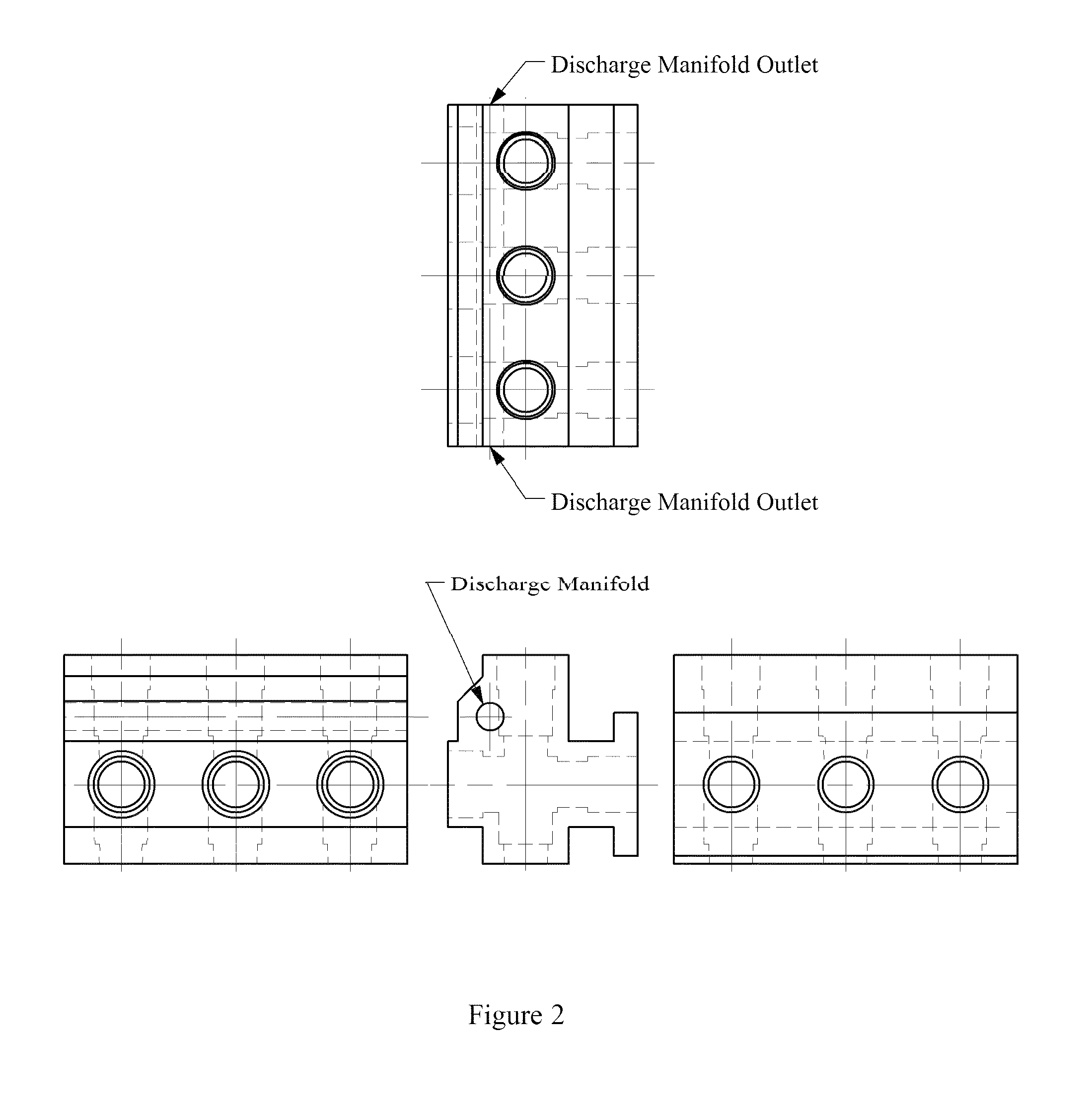Multiple port discharge manifold fluid end
a discharge manifold and fluid end technology, which is applied in the direction of positive displacement liquid engines, piston pumps, liquid fuel engines, etc., can solve the problems of premature valve failure, high pressure and repetitive impact loading of the valve body and valve seat, and the sealing surface of the valve is subject to exceptionally harsh conditions, so as to reduce the risk of slipping, shorten the life of the valve, and increase the wall thickness
- Summary
- Abstract
- Description
- Claims
- Application Information
AI Technical Summary
Benefits of technology
Problems solved by technology
Method used
Image
Examples
first embodiment
[0041]FIG. 10 schematically illustrates a cross-section of a right-angular plunger pump fluid end 10 of the present invention. Fluid end assembly composes a fluid end housing 15 with a central fluid chamber 1 which has a discharge fluid chamber 2 and a suction chamber 3, wherein discharge fluid chamber 2 contains a discharge valve and seat assembly 20. Said discharge valve and seat assembly includes discharge seat 21, discharge valve 22, discharge spring 23, and discharge cover guide 25. Similarly suction fluid chamber 3 contains a suction valve and seat assembly 30 composed of suction seat 31, suction valve 32, suction spring 33, and suction spring retainer guide 35. Discharge chamber 2 centerline 12 is collinear with suction chamber centerline 13 in the Central fluid chamber 1 also contains a plunger bore 40 and associated plunger 41; plunger bore 40 and plunger 41 are concentric to plunger centerline 14.
[0042]Additionally FIG. 10 illustrates discharge fluid chamber 2 which is co...
second embodiment
[0046]FIG. 12C schematically illustrates top sectional view this invention in which fluid end block 16 is fitted with a distal port 80 and a proximal port 90. Each port being through bored into fluid end block 16. Distal port 80 has dual connections 81 and 82 on opposite sides 18 and 19 of fluid end housing to connect the discharge flow to external piping. Similarly proximal port 90 has dual connections 91 and 92 on opposite sides 18 and 19 of fluid end housing to connect the discharge flow to external piping.
third embodiment
[0047]FIG. 12D schematically illustrates top sectional view of third embodiment of this invention in which fluid end block 17 is fitted with a distal port 60 and a proximal port 50. Each port being blind bored from the same side of fluid end block 17; either side 18 or 19. Illustrated in this figure, distal port 60 and proximal port 50 each have a connection 61 and 51 respectfully on side 18 of the fluid end housing 17 at the exit of the respective ports 60 and 50 to connect the discharge flow to external piping.
PUM
 Login to View More
Login to View More Abstract
Description
Claims
Application Information
 Login to View More
Login to View More - R&D
- Intellectual Property
- Life Sciences
- Materials
- Tech Scout
- Unparalleled Data Quality
- Higher Quality Content
- 60% Fewer Hallucinations
Browse by: Latest US Patents, China's latest patents, Technical Efficacy Thesaurus, Application Domain, Technology Topic, Popular Technical Reports.
© 2025 PatSnap. All rights reserved.Legal|Privacy policy|Modern Slavery Act Transparency Statement|Sitemap|About US| Contact US: help@patsnap.com



